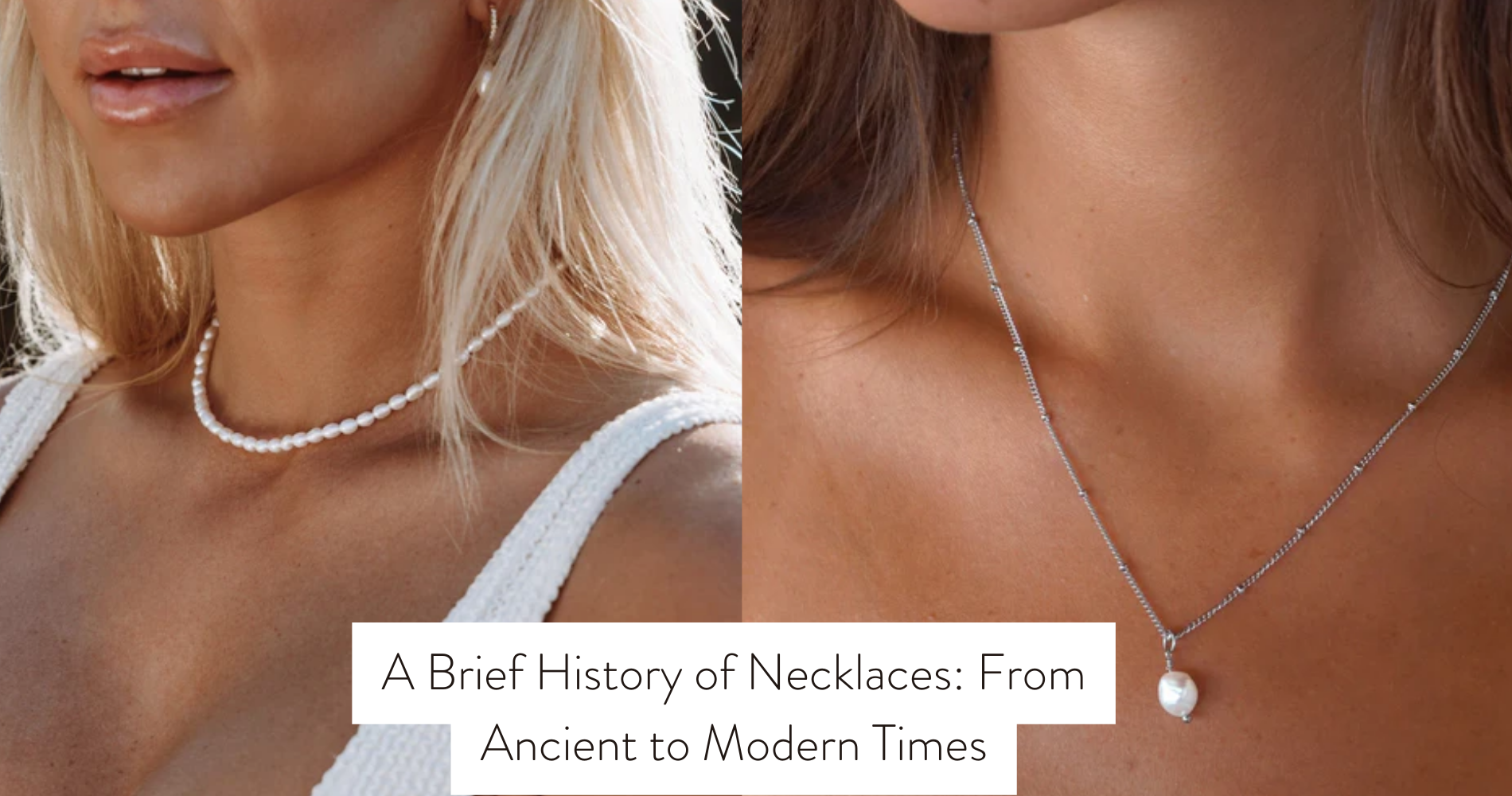
A Brief History of Necklaces: From Ancient to Modern Times
You may perceive necklaces as mere embellishments, but their development reveals an intriguing narrative. From the elaborate beadwork of ancient cultures to the contemporary, refined designs of the present day, each necklace style carries its own narrative.
Embark on a journey through time, and you'll unveil how these ornaments transcended mere aesthetics, mirroring societal ideals, cultural transitions, and individual identities.
Are you prepared to delve into the concealed meanings and historical importance behind these enduring accessories? And don't forget to explore the versatility and resilience of waterproof necklaces, ensuring your style endures through any elements.
Ancient Civilizations and Necklaces
Ancient civilizations adorned themselves with necklaces crafted from various materials, symbolizing status and cultural significance. These necklaces weren't just accessories; they held deep meaning and were often worn as a representation of one's place in society. In ancient Egypt, for example, necklaces made of gold and precious stones were reserved for royalty and high-ranking officials, showcasing their power and wealth. The intricate designs and craftsmanship of these necklaces reflected the advanced skills of ancient artisans.

In Mesopotamia, necklaces were also prominent, with beads and amulets featuring prominently in their jewelry. These necklaces were believed to offer protection and ward off evil spirits. In ancient Greece, necklaces were worn not only for adornment but also as symbols of religious beliefs. The use of materials like pearls, shells, and metals varied depending on the wearer's social status and occasion.
Medieval and Renaissance Necklace Trends
During the Medieval and Renaissance periods, necklaces evolved to reflect changing fashion trends and societal influences. In the Medieval era, necklaces were often worn as symbols of wealth and social status. Nobility and royalty adorned themselves with elaborate necklaces featuring precious gemstones and intricate metalwork. These necklaces weren't only decorative but also served as symbols of power and prestige.

As the Renaissance period emerged, necklaces became more intricate and detailed. The designs were inspired by classical art and mythology, incorporating motifs such as cameos, pearls, and intricate chains. Necklaces during this time were seen as expressions of individuality and personal style, with people from all social classes wearing them to enhance their outfits.
Furthermore, religious influences played a significant role in necklace trends during the Medieval and Renaissance periods. Many necklaces were adorned with religious symbols or featured designs inspired by religious texts. Overall, necklaces during these times weren't just accessories but also reflections of the wearer's identity and beliefs.
Baroque to Victorian Necklace Styles
Necklace styles transitioned from the intricate designs of the Renaissance era to the opulent and ornate aesthetics of the Baroque and Victorian periods. In the Baroque era, necklaces became grandiose and elaborate, reflecting the artistic style of the time. Baroque necklaces were characterized by their use of intricate patterns, large gemstones, and intricate metalwork. These necklaces were often worn as statement pieces to showcase wealth and status.

As the Victorian era approached, necklace styles evolved to encompass a mix of sentimental and symbolic elements. Victorian necklaces were often adorned with lockets holding precious keepsakes or featuring symbols such as hearts, flowers, or birds. Pearls, coral, and turquoise were popular gemstones during this period, adding a touch of elegance to the designs. Additionally, the use of gemstones in jewelry became more widespread, allowing for a wider variety of colors and combinations in necklace styles. The Victorian era marked a shift towards more personalized and meaningful jewelry pieces, setting the stage for future necklace trends.
Art Deco and Art Nouveau Influences
Incorporating distinct artistic movements, Art Deco and Art Nouveau influences revolutionized necklace designs with their avant-garde styles and geometric motifs.
Art Deco, prominent in the 1920s and 1930s, embraced modernism with bold, streamlined designs inspired by machinery and technology. Necklaces during this era featured geometric shapes, bright colors, and luxurious materials like diamonds and platinum. The emphasis was on clean lines and symmetry, creating a sleek and sophisticated aesthetic.
On the other hand, Art Nouveau, flourishing in the late 19th and early 20th centuries, drew inspiration from nature, incorporating flowing lines, intricate patterns, and organic motifs into necklace designs. This style celebrated craftsmanship and the beauty of the natural world, often utilizing materials such as enamel, pearls, and colored gemstones to evoke a sense of whimsy and romance.
Both Art Deco and Art Nouveau continue to influence contemporary necklace designs, with their distinctive characteristics and innovative approaches leaving a lasting impact on the world of jewelry.
Contemporary Necklace Designs
Modern jewelry designers are redefining necklace aesthetics by blending traditional craftsmanship with contemporary trends and materials. They're pushing boundaries with innovative designs that cater to diverse tastes and preferences. One striking trend is the use of unconventional materials like recycled metals, sustainable gemstones, and even 3D-printed components to create unique pieces that resonate with eco-conscious consumers.
Contemporary necklace designs also embrace minimalist styles, featuring clean lines and geometric shapes that exude elegance and sophistication. Layering necklaces of varying lengths has become a popular styling technique, allowing you to create personalized looks that reflect your individuality.
Moreover, designers are experimenting with asymmetrical arrangements, mixing textures, and combining different metals to add visual interest and depth to their creations. This dynamic approach to necklace design offers versatility, allowing you to effortlessly transition from day to night and elevate any outfit with a statement piece.
In essence, contemporary necklace designs are a creative fusion of tradition and innovation, offering a fresh perspective on this timeless accessory.
Frequently Asked Questions
What Materials Were Commonly Used to Make Necklaces in Ancient Civilizations?
In ancient civilizations, people commonly used materials like shells, beads, stones, and bones to make necklaces. These materials were readily available and crafted into beautiful adornments that held cultural and symbolic significance.
Were Necklaces Worn by Both Men and Women in Medieval and Renaissance Times?
Yes, both men and women wore necklaces in medieval and renaissance times. They were seen as symbols of status, wealth, and fashion. Necklaces were crafted from various materials like gold, silver, pearls, and gemstones to adorn both genders.
How Did Necklaces Symbolize Social Status During the Baroque and Victorian Eras?
During the Baroque and Victorian eras, necklaces symbolized social status by showcasing wealth and prestige. Elaborate designs with precious gemstones and intricate craftsmanship were worn by the elite to signify their position in society.
Did Art Deco and Art Nouveau Necklaces Have Any Specific Cultural Influences?
Art Deco and Art Nouveau necklaces were heavily influenced by the cultural shifts of the early 20th century. These styles drew inspiration from modern art, exoticism, nature, and geometric shapes, reflecting the changing societal values and aesthetics of the time.
Are There Any Particular Fashion Trends That Have Influenced Contemporary Necklace Designs?
In contemporary necklace designs, various fashion trends like minimalist aesthetics, bohemian styles, and personalized jewelry have influenced the industry. These trends often reflect current tastes, cultural movements, and individual expressions, shaping modern necklace designs.
Conclusion
So, now you know how necklaces have evolved over time, from ancient civilizations to modern designs.
From simple beads to intricate gemstone settings, necklaces have always been a symbol of beauty and status.
Whether it's a delicate chain or a bold statement piece, there's a necklace style for every era and personality.
Next time you wear a necklace, remember the rich history and craftsmanship behind this timeless accessory.




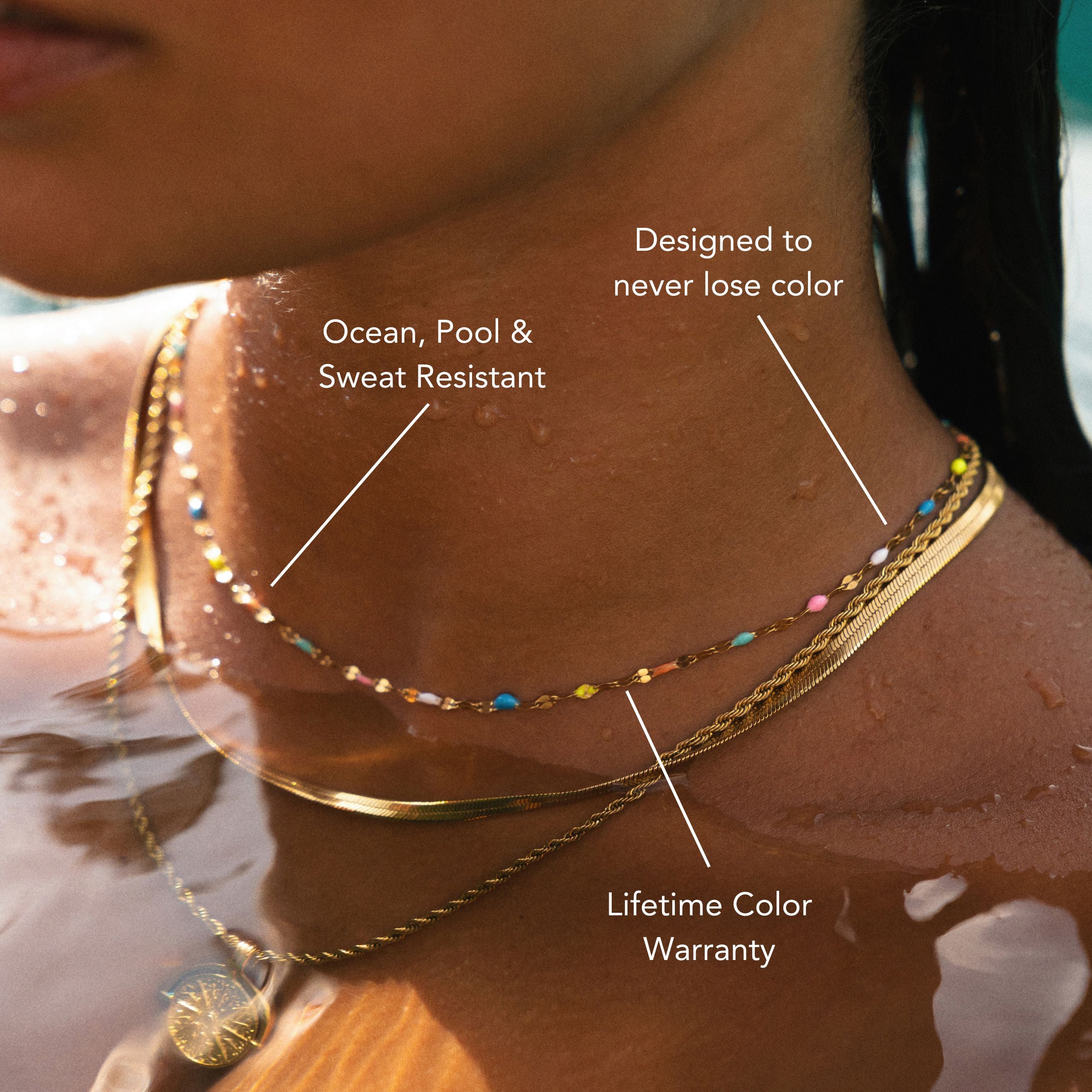
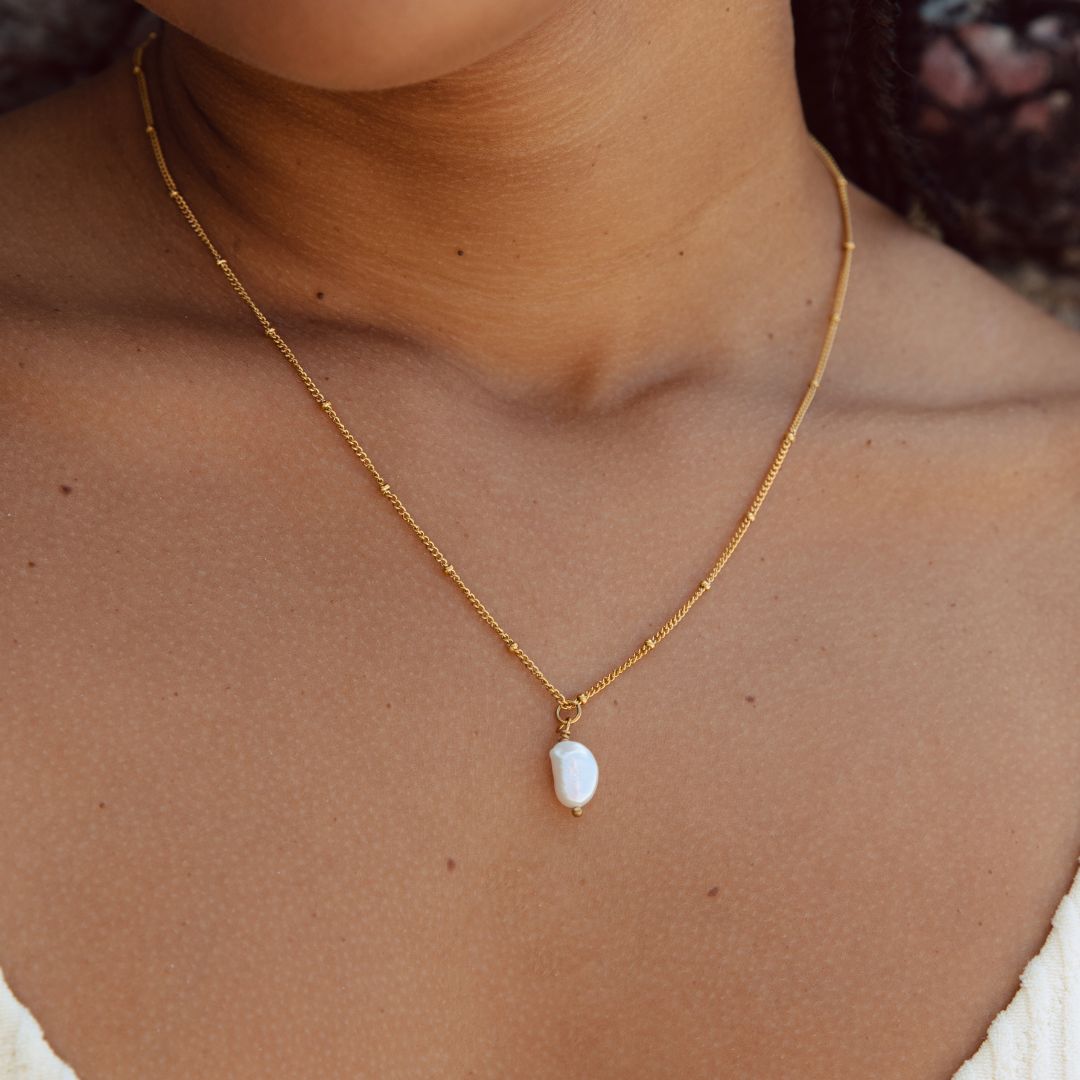
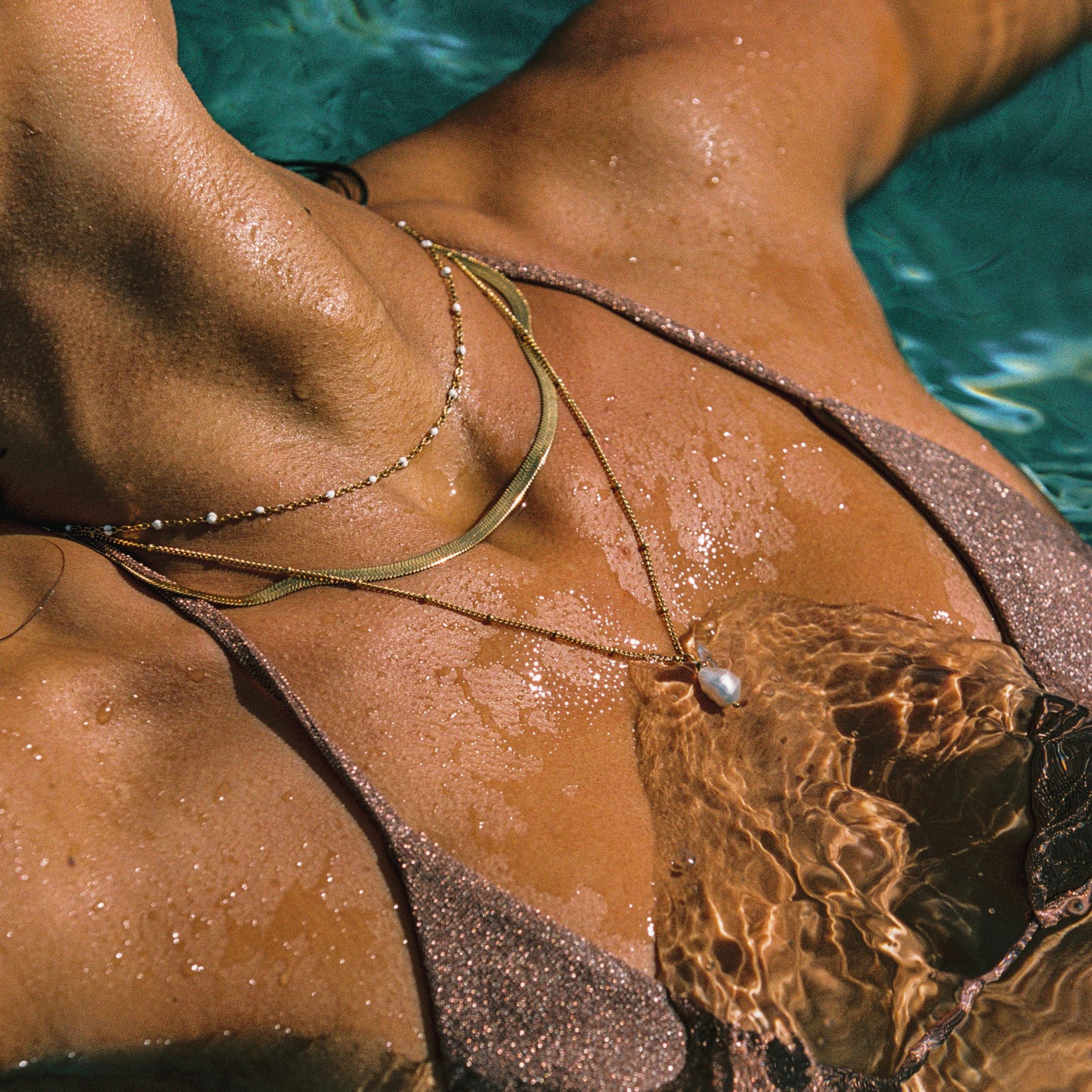


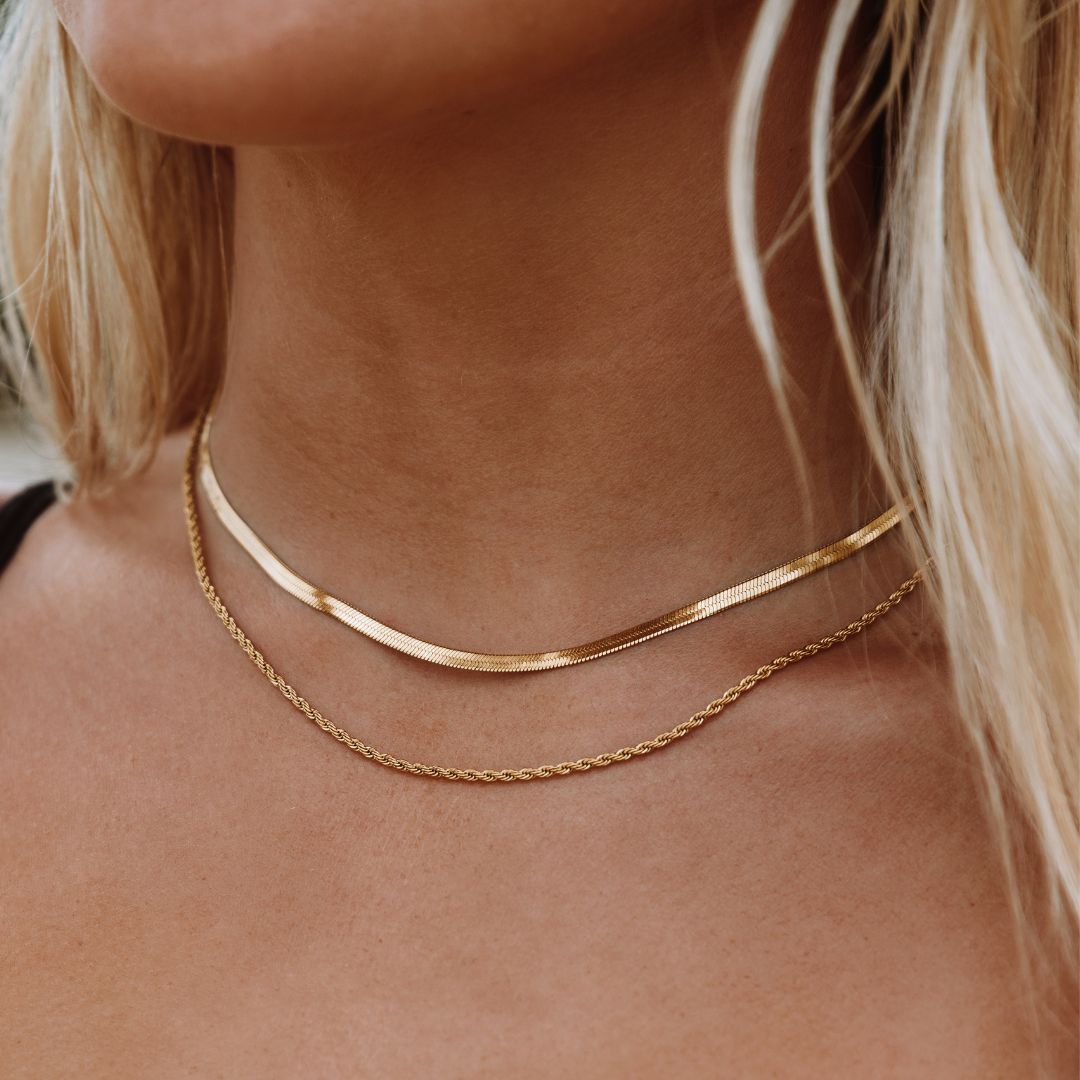

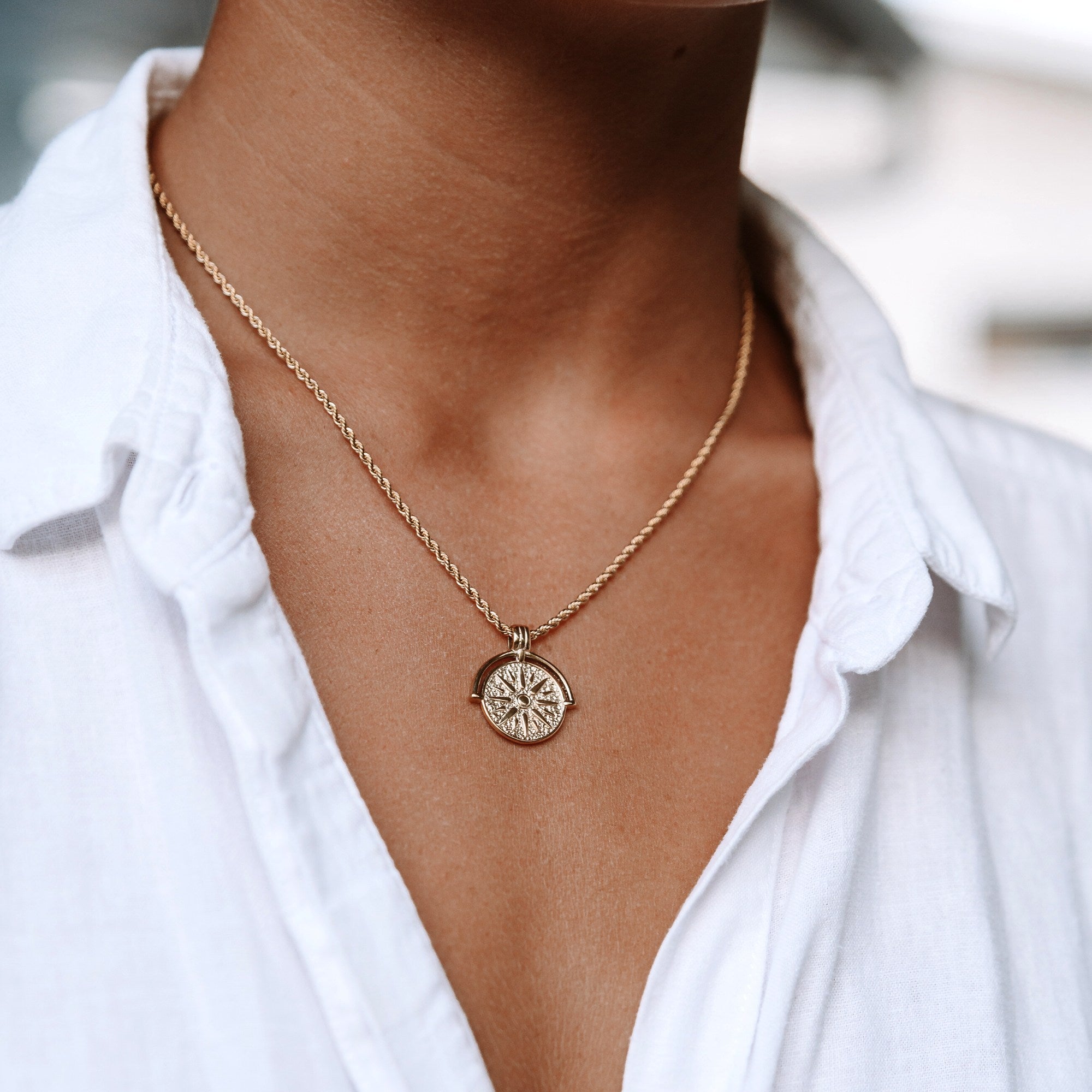


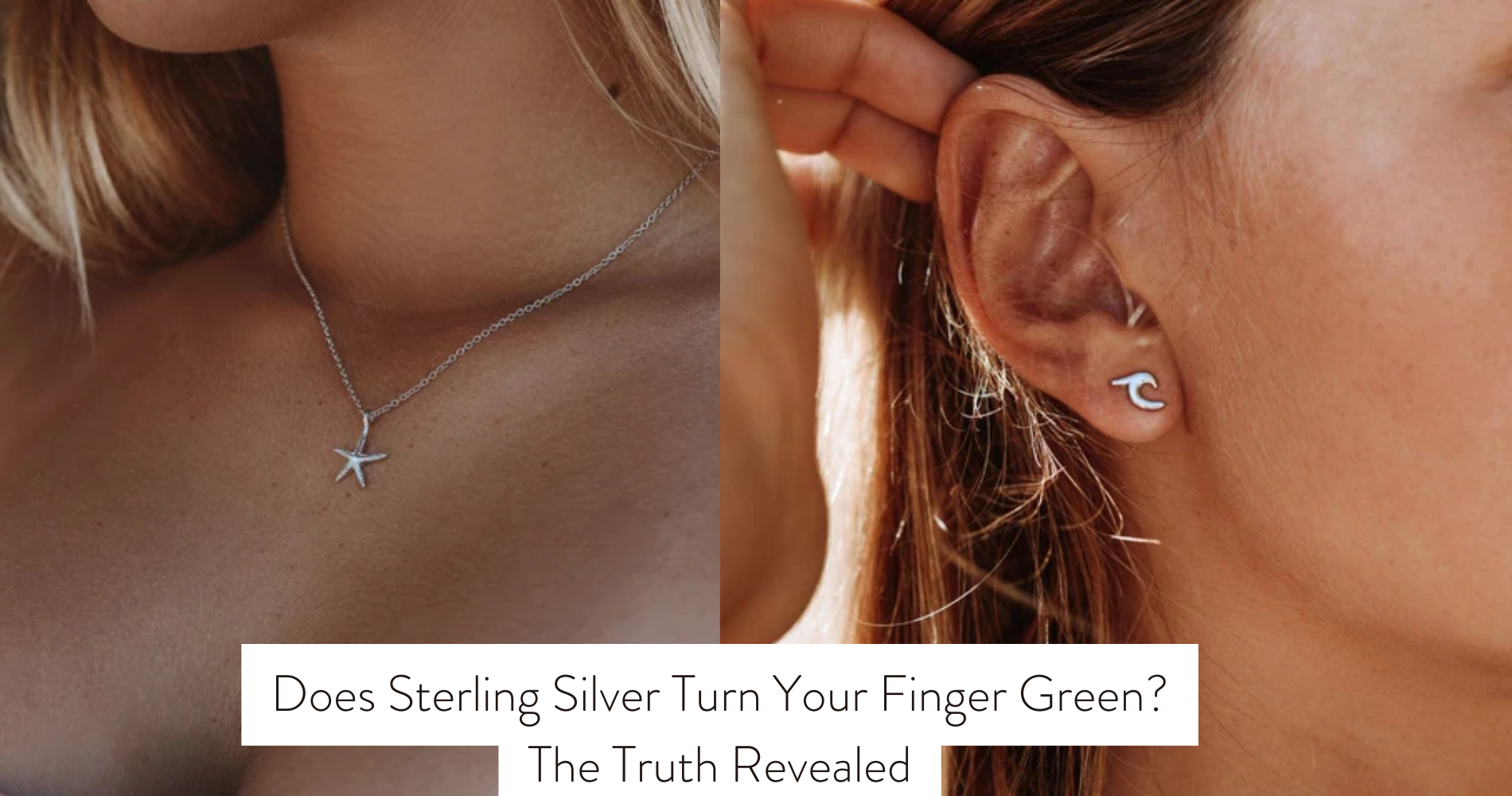




Leave a comment
This site is protected by hCaptcha and the hCaptcha Privacy Policy and Terms of Service apply.